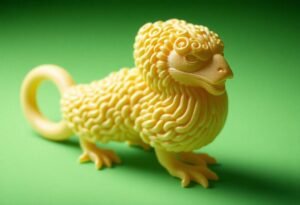New research has uncovered a revolutionary approach to enhancing the growth of endangered tree seedlings in shaded forest environments. Utilizing mirrors to redirect sunlight, this method significantly boosts seedling development, addressing a critical issue in forest conservation and biodiversity.
The Innovative Use of Mirrors in Forest Conservation
Recent advancements in forestry research have revealed that mirrors can serve as a valuable tool for promoting the growth of shaded seedlings. Traditional approaches to forest conservation often overlook the potential of harnessing sunlight more efficiently. By employing mirrors strategically positioned around seedlings, researchers have observed an astounding 175% increase in growth rates in certain endangered tree species. This method not only aids in overcoming the challenges related to insufficient light in dense forest canopies but also plays a pivotal role in preserving biodiversity.
Understanding the Mechanism Behind Enhanced Growth
Mirrors operate by redirecting sunlight that would otherwise be lost in shaded regions of the forest floor. In a controlled study involving various tree seedlings, the reflective surfaces maximized the amount of light exposure, allowing plants to photosynthesize more effectively. Enhanced light availability translates directly into greater biomass accumulation, enabling seedlings to develop stronger roots and foliage. This approach proves essential for species struggling to thrive in their natural habitats due to competition for light.
Environmental Benefits of Using Mirrors
Beyond the immediate advantages for seedling growth, this innovative method also contributes positively to the environment. By promoting the growth of endangered species, we can enhance forest resilience and foster healthier ecosystems. Increased diversity in tree populations helps combat climate change by optimizing carbon sequestration. Furthermore, healthier forests provide habitat for wildlife and improve overall ecosystem services. Thus, using mirrors not only addresses the problem of slow growth in shaded seedlings but also aligns with broader environmental goals.
Challenges and Considerations for Implementation
While the application of mirrors for seedling growth appears promising, there are practical challenges to consider. Installation requires careful planning to ensure that mirrors are optimally positioned to capture sunlight without causing harm to surrounding vegetation. Additionally, there may be aesthetic concerns in natural areas regarding the introduction of reflective materials. Addressing these challenges is essential for implementing this technique on a larger scale and achieving its conservation potential.
Future Research Directions in Forest Ecology
This groundbreaking research opens doors for future studies examining the long-term effects of mirror usage on various tree species. Scientists aim to understand whether consistent application can lead to sustainable growth patterns or if periodic adjustments will be needed. Continued exploration in forest ecology could enhance our understanding of plant light requirements, thus refining the use of mirrors in conservation efforts and ensuring that we can adapt to changing environmental conditions.
The Role of Community in Conservation Efforts
Successful implementation of this innovative approach requires community involvement. Educating local stakeholders about the benefits of mirrors for seedling growth can foster support and collaboration in conservation initiatives. Engagement can also enhance awareness of the significance of biodiversity and forest conservation among community members. Encouraging citizen science projects may further enrich our understanding of forest ecosystems while allowing local populations to take an active role in protecting their environment.
Disclaimer: This article is for informational purposes only and does not constitute professional advice. For personalized guidance, please consult a qualified expert.





















